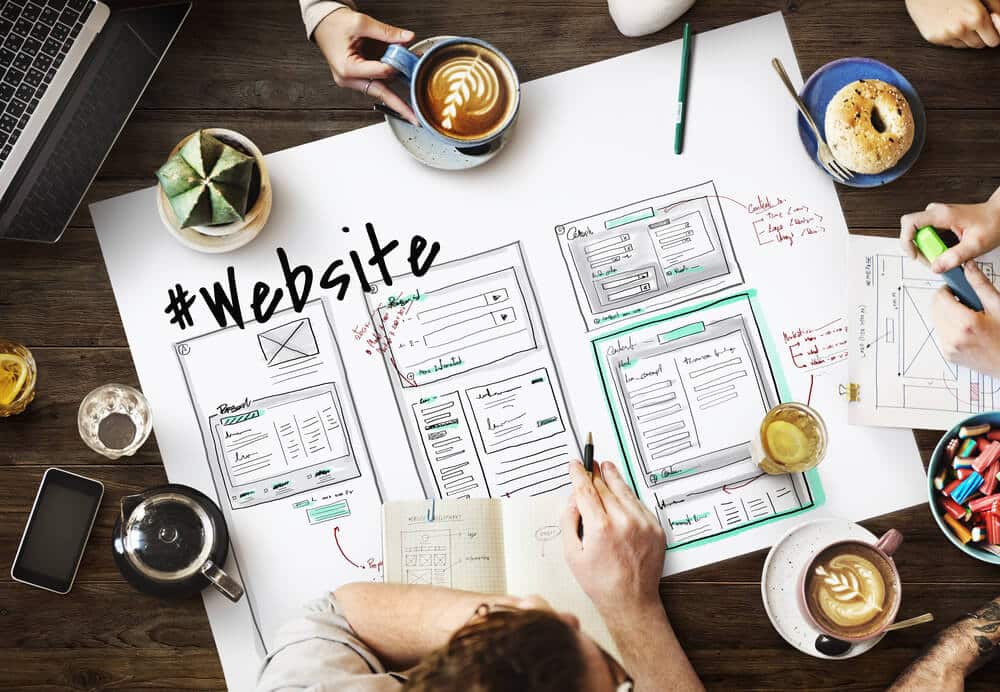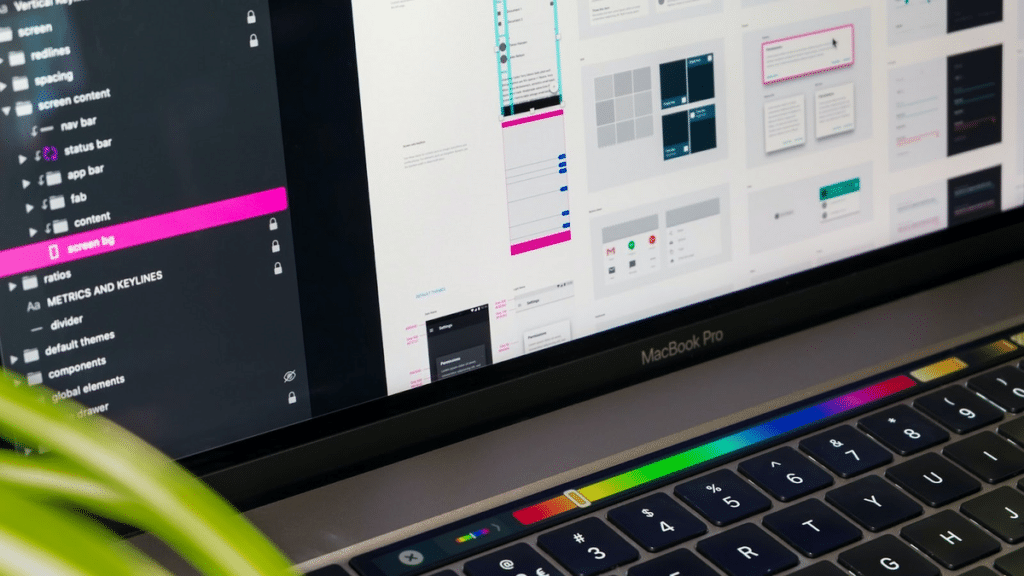Hello there, dear reader! Welcome to yet another comprehensive guide on How to Learn Web Designing!
Today, we want to delve into what is involved in learning web design.
By the end of this session, you’ll know the web design courses you can pursue and the key areas of knowledge you should focus on.
In summary, we’ll talk about:
- Online Web Design Courses
- Key steps to Learning Web Design
- Paid Web Development Courses
- Free Web Design and Development Courses
Let’s jump right in!
Introduction

When starting out, it might be challenging to figure out How to Learn Web Design, as there are many pathways.
The process is not as complicated as it seems.
And becoming a Web Designer is not a far-fetched dream.
So, we’ve put together everything you need to know to get started in this rapidly growing profession.
Online Web Design Courses

The key to learning web design is finding the right programs to equip you with the needed skills.
There are many resources online, from free study materials to free and paid courses.

Here is a breakdown of the paid, freemium and free web design and development courses that you can pursue.
Paid Web Development Courses

For you to access these courses, you must pay first.
Udemy
Udemy has a wide range of web development courses ideal for beginners and advanced programmers.
The platform has a programming course for the different programming languages and frameworks.
But you can also sign up for comprehensive whole web development courses.
Some of the web development courses on Udemy include:
- Certified HTML, CSS, JavaScript Web Developer
- Full-Stack Web Developer Course
- Introduction to Web Development
- Running a Web Development Business
- Ultimate Web Designer and Web Developer Course
- Introduction to Programming
The web development courses have different price points depending on the course content.
TreeHouse
TreeHouse has many web development and graphic design courses.
Learners can get started on the 43-hour video lessons on web design basics, including HTML, CSS, and layout.
You can also get started in:
- Full-Stack Web Development
- Beginning Python
- Full-Stack JavaScript
- Web Design
- Design Skills for Web Developers
- UX: Interaction and Design
- Design and Build a Website
With TreeHouse, you have seven days of free trials to scout through the many courses before paying for the ones you want.
Future Learn
Future Learn has an excellent UX Design and Research program.
The course offers in-depth training in UX prototyping, UX sketching, and evaluation of design concepts.
The program helps you better understand how users interact with websites and applications at an in-depth level.
The program has five courses that take 29 weeks to complete and cost $345.
Freemium Web Design Courses
These are courses you can learn for free, but you’ll be required to pay to access advanced programs or earn a certification.
W3School
W3School is a freemium platform where you can learn basic web design and development courses for free, but you’ll be required to pay to access advanced courses.
The platform offers tutorials and references to several coding languages, including HTML, Python, C++, Java, CSS, and PHP.
Further, there are courses on jQuery, SQL, Bootstrap, and much more.
The only thing that will limit how much you can learn is you.
edX
edX has many computer programming-related programs.
The platform offers university-level courses in full-stack development, front-end development, python, etc.
Some of the programs on edX include:
- Programming for Everybody
- Introduction to Python Programming
- Fundamentals of C++
- How to Code: Simple Data
- Introduction to Java Programming: Starting to Code in Java
edX offers free courses.
But if you need a verification certificate, you’ll have to pay $50-$300 to get one.
Free Web Design and Development Courses

Free courses don’t require you to pay for anything.

Once you sign up, you can access all the courses on the platform.
freeCodeCamp
As its name suggests, the web development courses on this platform are absolutely free.
To get started, you’ll simply sign up with your email.
FreeCodeCamp helps you learn programming languages such as HTML5, CCS3, and JavaScript.
There are also several courses that you can learn for free and earn a certificate upon successful completion.
They include:
- Data Structures and JavaScript Algorithms
- Back-End Development and APIs
- Data Analysis with Python
- Legacy Responsive Web Design
- Front-End Development Libraries
These are just a few.
The website has a wide array of web development courses to choose from.
Codecademy
Codecademy offers 100% free web development courses.
The site has loads of web development courses for aspiring Web Developers at different stages of learning.
You can sign up for computer science, full-stack, and front-end development courses.
You can also learn JavaScript, HTML & CSS, python, and many other programming languages.
Evanto Tuts
The responsive web design course offered by Evanto Tuts introduces learners to the basics of web design.
In this course, you’ll learn programming languages, including HTML, CSS, and media queries.
Further, you’ll be introduced to design software such as Sketch and Adobe XD.
There are also several web design tutorials and how-to videos that you can learn a lot from.
As a member of Evanto Tuts, you’ll have access to web development templates and millions of stock photos that will definitely come in handy when you become a Web Developer.
Webflow University
Webflow University has an ultimate web design course you don’t want to miss.
The course is centered on how to use Webflow.
The course covers the basics of Webflow, how to build a website in Webflow, Webflow CMS, and the basics of HTML and CSS.
You’ll start with the basics and advance gradually to more advanced stuff.
By the end of the training, you’ll be well-versed in how Webflow works.
Key Steps to Learning Web Designing

Now that we’ve covered the different Web design courses that can help jumpstart your career, it’s time to break down the process of becoming a Web Designer.
What are the key web design skills and techniques that you should learn?
Well, we’ve compiled key areas of knowledge to guide you toward learning web design:
Learn the Principles of Visual Design
The fundamentals of design principles are key to web design.
The principles play a crucial role in how a website looks and feels.
Aspiring Web Designers must be able to balance the analytical aspects of web design with the creative aspect.
Hence, to build an attractive website, there are key design principles that you should grasp.
Here is the outline of the top five:
Color Scheme
Color is critical when designing a website.
For that reason, you must learn about the theory of colors.
Understand the color wheel like the back of your hand.
That means you’ll have to educate yourself on contrasting, monochromatic, analogous, complementary colors, etc.

Apart from understanding colors, you’ll have to delve into the emotion of colors.
Which emotions do different colors elicit?
Which colors mesh together?
What’s the story behind different colors?
With thorough knowledge of colors, you can create effective color schemes that correspond to the industry, the company’s brand, and the target audience’s demography.
The key to being a good Designer is to use colors that appeal to site visitors.
Shape
You should be well-versed in three basic shapes in website design: circle, square, and triangle.
Each of these shapes has different functions.
They also communicate different emotions.
Designers use squares and rectangles when writing block content.
Circles are for buttons, while triangles are used alongside important information such as a call to action.
When it comes to emotions, circles symbolize harmony and comfort, squares stand for strength, and triangles represent importance and action.
To be a savvy Website Designer, you must have practical knowledge of shapes and how you can manipulate them to achieve maximum effect with website visitors.
Line
Lines are the basis for creating a balanced website that’s well-organized.
So, part of visual design is understanding how lines can help you achieve balance and order on a website layout.
Texture
Textures give us a feel of the smoothness or roughness of an item.
On a website, texture communicates the same message.
Your goal in the web design process is to create an interesting texture that gives the web pages some personality and injects depth.
So, educate yourself on textures and how to use them to hold website visitors’ attention.
Grids
Grids help with the structure of a web layout.
It allows you to organize all the website elements, including texts and images.
Grids are instrumental in bringing order and having a clean web design, so it has to be part of your web design learning process.
Understand the Basics of HTML and CSS
Hypertext Markup Language (HTML) is essential in structuring a web page.
It’s what makes it possible for a browser to generate a website.
HTML determines how content, navigation, images, and other elements appear on a web page.
HTML tags are the nuts and bolts of how images, links, paragraphs, and headings appear on a website in your browser.
It makes content hierarchy possible.
That means it plays a crucial part in the layout structure.
HTML tags also affect how web crawlers index a page, influencing where a website appears on the search engine.

Since HTML is core to how a website is displayed on a browser, you must learn how it works.
Although, you don’t have to be an expert.
Cascading Style Sheets (CSS) work together with HTML.
It dictates how the HTML elements appear on a website.
CSS helps you create grids, add padding, set alignments, apply fonts, and so on
With knowledge of CSS, you can easily customize templates to create unique websites.
So, it should be an integral part of your learning journey.
Learn About Web Design Tools
Web design tools are an integral part of learning web design.
So, we’ve highlighted the most important tools that you should learn straight off the bat:
WordPress
WordPress is the most popular content management system in the world, making up 76% of the market share.
It also makes up 27% of all the websites online.
WordPress is popular because of the many built-in themes, templates, and plugins.
You can build, edit, optimize, and enhance a website without coding using WordPress.
It makes your web design work easier.
Invision Studios
Invision Studios comes top of the list of the best website design tools.
Web Designers agree in unison that its many features and rapid prototyping makes it the best.
Invision Studios has many features that make customization a breeze.
So, it will be in your interest to learn how features like clicking, hovering, and swiping work.
Photoshop
Photoshop is great for designing websites.
It allows you to build visually appealing websites.
The many color options and gradients allow you to create eye-catching images.
Learning Photoshop will allow you to bring your creativity to life.
Dreamweaver
Dreamweaver gives you the chance to code a website, no matter your skill level.
The platform has templates that are ready to use.
There are also several tools for designing responsive designs.
Google Web Designer
Google Web Designer is the tool you need to familiarize yourself with if you are interested in creating HTML5 content.
With Google Web Design, you can use interactive elements and animations to give life to your designs.
This tool is also perfect as it works well with other Google products.
Learn the Fundamentals of UX and UI
User experience design is about how the users feel when navigating a website.
The typography, layout, color scheme, and visuals all work together to give web visitors a great experience.
UX design is centered around eliciting the users’ emotions.
For a great user experience, you must consider the user persona, information architecture, prototyping, wireframes, and user flows.
These are an integral part of what you should learn in UX design.

With this knowledge, you can create a user experience that syncs with a company brand and gives users a smooth journey.
On the other hand, a user interface is an element that users can see on the website.
UI design involves creating an intuitive interface.
The design should be simple and consistent.
Again, it should follow a repeatable pattern.
The user interface should adopt easy-to-use controls, and all the functionality should be obvious.
In fact, users should recognize them at a glance.
When you learn UI design, you’ll understand how to optimize a site’s usability for a better user experience.
Get Familiar with the Basics of Creating Layouts
Websites can adopt an F-pattern or Z-pattern.
F-pattern has a lot of negative space with few words and images.
Z-Pattern is loaded with content.
It’s especially used in blogs or publications websites.
Becoming a Web Designer involves learning design patterns and which work best in what circumstances.
Learn about Typography
Fonts are crucial in how a website feels and looks.
Fonts evoke different emotions and tones, which ultimately will affect readability.
And so, given their power on readers, it’s important to understand the different typographic concepts: serif, sans serif, and display.
Practice as Much as Possible
When all is said and done, you can only learn web design by practicing.
The best way to practice is to start with simple projects as a freelancer.
You can apply for simple web design projects on sites like Upwork or Fiverr.
You can also test your know-how by designing free websites for friends or family members.
Another practice strategy is to build a fake business or company website.
Do as many mock designs as possible to polish your skills.
Conclusion

We’ve finally come to an end of our discussion.
We hope you have a clear picture of how to learn web designing.
We’ve covered the many online courses you can delve into and give you an outline of the key concepts you need to learn.
The next step is to sign up for one or more of these courses and start your journey to frontend web development.
If you are passionate about web development, you’ll complete your studies and become a Web Designer in no time.
Frequently Asked Questions

Can I learn web design on my own?
Yes. You can.
There are many web design resources you can learn from.
Free online tutorials, YouTube videos, and paid online courses are part of the resources you can leverage.
After completing your learning, the next step is to apply the lessons learned and practice to master the skills.
How long does it take to Learn Web Design?
The duration varies depending on your education pathway.
If you opt for a degree program, it will take four years.
An associate degree course is only two years.
Bootcamp web design programs can run for 3-12 months.
And lastly, online courses may take a few months to several years.
Is Web Designing easy to learn?
Web design can be challenging to learn.
It can be daunting since there are many technical skills that you should learn.
Again, the learning process never ends.
You are constantly learning as you design more websites.
You’ll only succeed if you are committed and put in the effort.
What are the basic principles of Web Design?
– Clear purpose: The website must meet the needs of the users
– Load time: Visitors will only stay on a website that loads fast
– Typography: All about easy-to-read fonts
– Mobile friendly: A responsive layout is ideal as it adjusts depending on the visitors’ screen
What is the best way to Learn Web Design?
The best way to Learn Web Design is to first learn the basic concepts of visual design.
From there, you can delve into HTML and CSS.
Further, you need to educate yourself on user experience and user interface.
Then, the basics of creating a layout and elements of typography.
What are the seven steps to web design?
According to web.dew, here are the seven steps to web design:
– Identify your web design goals
– Determine the scope of your project
– Design your website
– Create web content
– Visualize the content
– Build the website
– Launch the website
The steps vary from one Web Designer to the next.
Can I Learn Web Designing for free?
Yes. You can.
There are many websites that offer free web design courses.
These sites include Codecademy, freeCodeCamp, Evanto Tuts, and Webflow University.
You can also learn for free on sites like YouTube.
Moreover, there are loads of books and blogs that can guide you in web design.
Is Web Design Difficult?
Yes! It’s challenging, as you must dedicate your time to learning.
There are technical skills that you need to learn and also practice soft skills to complete projects successfully.
However, web design will not be hard if you are passionate about tech.
What should I study to become a Web Designer?
You can study for a bachelor’s of computer science, computer programming, or web design and development.
You can pursue the same courses at an associate degree level.
You can opt for web development courses or programming courses on online platforms like Coursera, Udemy, and Skillcrush, among others.









